Interested in hiking the Santa Cruz Trek without a guide? This article showcases my experience hiking the trek in 3 days, coping with altitude sickness and climbing up to 4750m high. Included in this article is my personal advice on transport to and from the Santa Cruz trek and the costs you can expect to pay.
After spending a few weeks riding my bicycle through the Peruvian desert, it was time to leave the sand dunes behind and make my way to Huaraz in the Peruvian Andes.
Countless people, I’d met on my bicycle touring trip around South America recommended that I visit Huaraz and hike the 4-day Santa Cruz trek. I wanted to see what all the fuss was about so I decided to visit.
Turns out, it’s one of the most popular treks in the world and for good reason…
…it’s absolutely stunning!!!
Watch the video below to see what it was like hiking through the Peruvian Andes on the Santa Cruz trek:
(To see more videos from my bicycle touring journey around South America, click here)
First Things First…
Before you start your hike you’re going to need to make a few decisions before you do anything else.
Firstly, you need to decide which direction you’re going to do the hike in. It’s possible to hike the Santa Cruz Trek in either direction (from Vaqueria to Cachapampa or vice versa).
I recommend starting the hike in Vaqueria as it’s at a higher altitude than Cachapampa meaning it will be a little easier. On top of that, it’s easier to catch a bus from Cachapampa back to Huaraz after you’ve finished your hike.
Secondly, if you want to hike the Santa Cruz trek without a guide (like I did), you’re going to need to organize your own transport, gear and 3-4 days of food. Unless you decide to hire a donkey, you’re going to have to carry all of this gear on your back, so only take the things you’re definitely going to use.
There are plenty of places to hire camping gear in Huaraz so don’t worry if you don’t have everything with you.
Thirdly, you’re going to need to organize your own transport to and from the start of the Santa Cruz trek.
How to Get to The Start of the Hike
I recommend catching the minibus from Huaraz to Yungay (number 14) at around 5 or 6 am because it will give you more time to hike on day 1.
From Yungay, you need to take another minibus to Vaqueria. The whole journey from Huaraz to Vaqueria (where you start the hike) is around 6 hours.
I left at 6 am and arrived in Vaqueria around 11.30am so I could start hiking by 12 pm.
Day 1 – Santa Cruz Trek
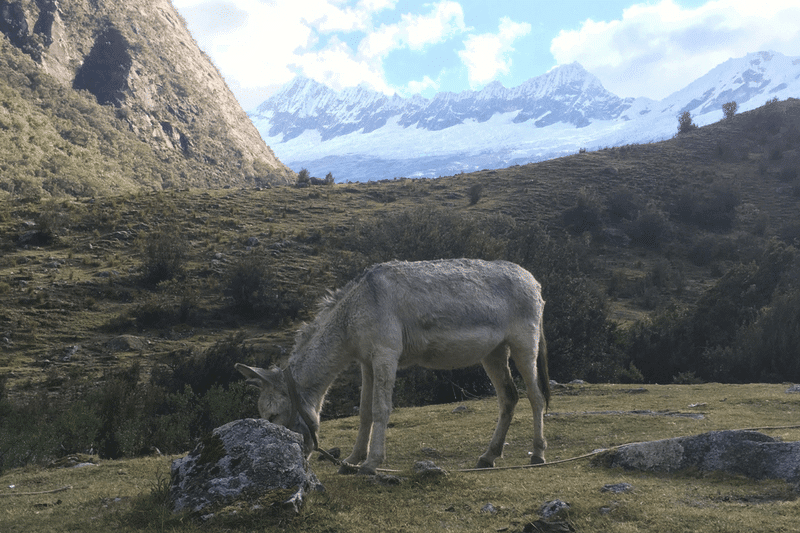
The start of the hike is really peaceful as it’s slightly downhill through the countryside with views of snow-capped mountains and farms filled with animals.
Although you don’t need a map to stay on the right path, I somehow managed to walk in the wrong direction as I left the first town. When I couldn’t see anyone else, I decided to return to the town and ask for directions.
It takes around 3-4 hours to get to the first campsite (where I stayed at), but it’s possible to walk for another 2-3 hours to the second campsite if you leave early enough.
Many people walk to the second campsite because the next day is the most challenging of the hike and is the when you’ll have to climb to the summit of the mountain.
Unfortunately for me, I ignored the warnings about altitude sickness and didn’t acclimatize myself (I’d just come from the coast) prior to starting the hike.
This meant that I had a dizzy head, loss of appetite, sickness in the stomach, blood noses, dry lips and no energy for the majority of the 3-day hike.
On the first night, I pitched my tent at 4250m, crawled into my tent and slept for 13 hours.
Day 2 – Santa Cruz Trek
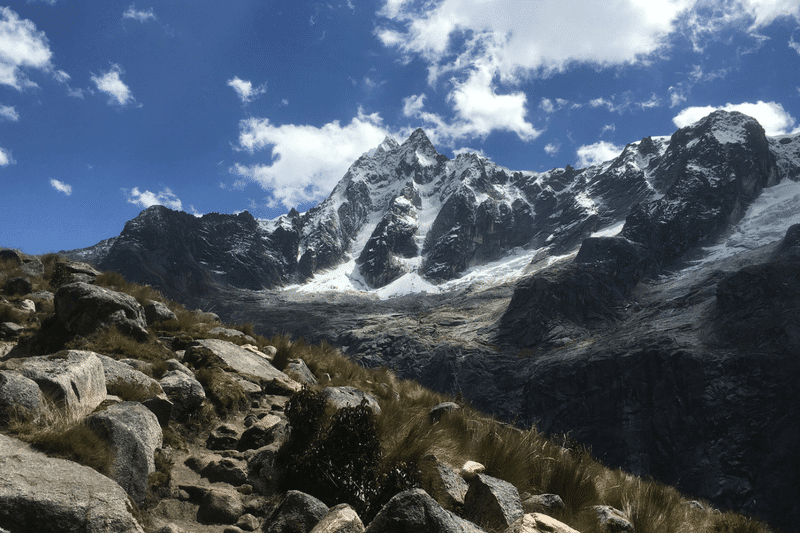
Waking up on the morning of the second day proved to be less of a challenge than I thought it would be.
I was feeling a little better after such a long sleep.
However, when I got out of my tent at around 7 am, everyone else at the campsite had already packed up and left!
That’s right, I remember now, this was going to be the hardest day of the hike.
Whoops!
So what turned out to be a late start in comparison to everyone else, turned into a magical day of walking through giant valleys of green grass and snow-capped mountains as far as you could see.
Unfortunately, after only a few hours of walking, the altitude sickness crept in again. I was feeling even worse than the first day.
Every 10 metres I was having to stop for 30 seconds just to try and catch my breath. It was crazy!
As you can imagine, it was a really slow day walking to the summit (4750m) but beautiful nonetheless.
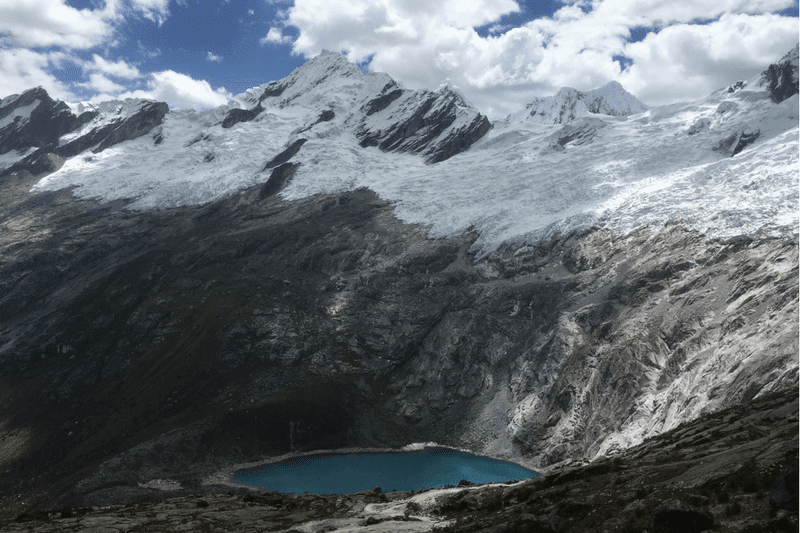
By 12.30pm I’d finally made it to the top!
I could finally sit down, relax and really appreciate the beautiful views all around me.
At the top, I decided to have some lunch which consisted of peanut butter sandwiches. The peanut butter drew a large crowd (the few others that were at the top) and before I knew it, we’d finished the whole jar of peanut butter between us.
By 1.30pm I started making my way down the mountain towards the next campsite. Knowing that I didn’t have to climb any higher for the remainder of the hike gave me a quiet confidence hoping that my altitude sickness would no longer get the better of me.
As I merrily strolled down the mountain, the altitude sickness crept back in, and within only 30 minutes from starting the descent, I vomited.
On the bright side, it made me feel well enough to make my way to the campsite and arrive by 4 pm.
Once again, I quickly tried to set up my tent so I could lie down and sleep.
I slept for 12 hours!
Day 3 – Santa Cruz Trek
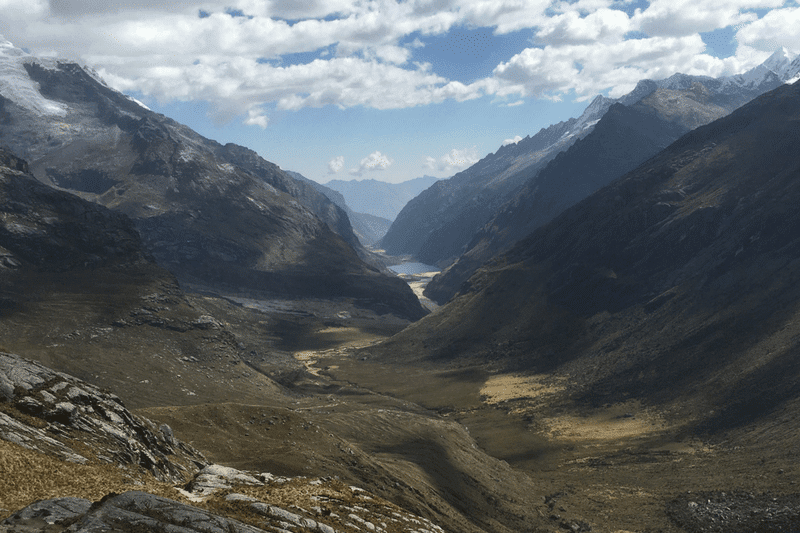
The next morning I was feeling a lot better. Once again, the campsite was beautiful and had great views of snow-capped mountains, blue lakes, and green valleys.
At 6.30am, I poked my head out of the tent to make sure there were still others around. I wanted to make sure that I wasn’t the last one at camp again. Thankfully, most people were still asleep and I was actually one of the first people to leave camp.
Now that I was at a lower altitude I was walking faster and starting to really appreciate the hike.
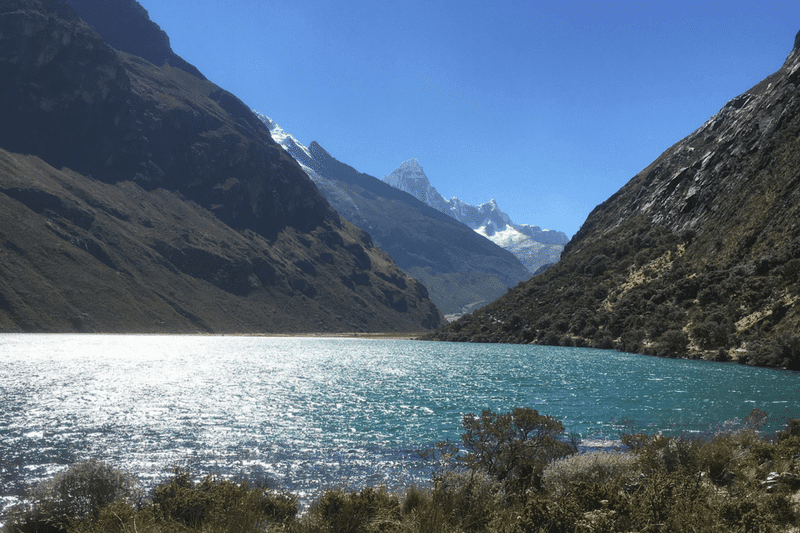
By 11.30am I’d already made it to the campsite for the third night
Since I’d had a few days of not feeling too well, I decided to keep walking and finish the Santa Cruz trek in 3 days instead of 4.
It was a total of about 20km walking for the day which was much more pleasant (and easy) than the previous 2 days.
In retrospect, I wish I had stayed the extra night and had the full afternoon to relax and enjoy myself in the valley next to the river.
I ended up arriving in Cachapampa (the end of the hike) around 2 pm and was able to catch the last minibus of the day at 3 pm to Caraz.
From Caraz, I had to take a final minibus back to Huaraz and arrived at 6.30pm.
Costs
-Minibus (number 14) from Huaraz to Yungay – 5 soles
-Minibus from Yungay to Vaqueria – 20 soles
-Entry to National Park – 65 soles
-Minibus from Cachapampa to Caraz – 15 soles
-Minibus from Caraz to Huaraz – 5 soles
-Gear Rental (if needed) – you can rent most items (separately) for 5-10 soles each per day.
Conclusion
The Santa Cruz trek is an incredible adventure that you should definitely consider doing if you travel to Huaraz, Peru.
It was extremely easy to organize and a lot cheaper than going with a tour group. While joining a tour may be easier (the donkeys carry your gear and guides cook your food), it was much more enjoyable hiking by myself at my own pace, without a guide or any maps.
If you decide to start the tour in Vaqueria (like I did), you should be able to finish the hike in 3 days if you choose to. I was able to do so despite struggling with altitude sickness for the majority of the hike.
For those of you who prefer to do it over 4 days, you’ll have more time to spend appreciating the beautiful views all around you.
Let me know if you have any questions about hiking the Santa Cruz trek without a guide in the comments below.
Have you ever been to the Peruvian Andes? How did you enjoy the experience?